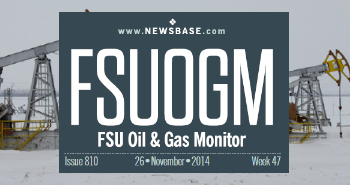Gazprom returns to profit in 2024 after first loss in decades in previous year
Russia’s state gas exporter benefited from higher gas prices in Europe and increased sales to China.
WHAT: Gazprom returned to the black in 2024 after suffering its first loss in decades during the previous year.
WHY: The company earned its second highest revenues on record and its third-highest EBITDA.
WHAT NEXT: The company’s avenues for long-term growth are unclear, amid uncertainty over a prospective gas deal with China.
Russia’s state gas exporter Gazprom swung back to profit in 2024, the year after suffering its worst loss in decades in the previous year, on the back of higher export volumes and revenues, the company reported on April 30.
The company earned a net profit of RUB1.2 trillion ($15bn), versus a loss of RUB629bn in 2023, enjoying a 25% bump in revenues to RUB10.7 trillion – its second highest on record after the RUB11.7 trillion it reported for 2022. It also achieved a 76% surge in EBITDA to RUB3.1 trillion – the third best result in its history.
Gazprom gained from higher gas sales in foreign markets, primarily China, as the Power of Siberia 2 pipeline is set to reach its full capacity of 38bn cubic metres annually this year. It also benefited from higher gas prices, particularly in Europe, where a colder winter and weak wind output in the latter part of the year fuelled bullish sentiment.
Gazprom also gained from gas exports to Uzbekistan, initiated in October 2023 under a contract covering 2.7 bcm per year of supply. Russia used to buy Uzbek and other Central Asian gas, but decline in Uzbek production and Russia no longer having need for extra gas to send to Europe has resulted in flow being reversed.
Another contributor to higher numbers was Gazprom’s takeover of Shell’s stake in the Sakhalin-2 LNG project in the Far East.
Revenues from gas sales rose by 33% to RUB4.1 trillion, but taking into account excise taxes and customs duties, the sum climbed 19% to RUB4.9 trillion. Revenues from gas exports were up 24.5% at RUB3.6 trillion, while revenues from gas sales on the domestic market climbed only 6% to RUB1.3 trillion. Gazprom’s domestic sales are subject to price regulation.
Net profit was also supported by adjustments for non-cash items, which came to RUB1.4 trillion – twice as high as the figure for 2023. Net debt stood at RUB6.7 trillion – the same level as a year ago, although the adjusted net debt to EBITDA ratio decreased to 1.8 from 2.8.
Gazprom also maintained a significant liquidity cushion exceeding RUB1 trillion in 2024, ensuring strong financial stability.
Notably, Gazprom’s stock price hardly changed when its results were released on April 30, with shares on the Moscow stock exchange climbing only a mere 0.5% by the end of trading on the day, indicating that its figures were largely in line with expectations. The company’s market capitalisation currently stands at RUB3.5 trillion.
The outlook ahead
In the year, Gazprom will gain from the government’s abolition of a tax surcharge amounting to RUB600bn annually, which had been imposed when the company generated record profit in 2022 at the height of the European gas crisis.
However, the company will also take a hit from the loss of revenues from gas supplies to Europe through Ukraine, following the termination of Moscow’s transit contract with Kyiv on January 1. Those supplies amounted to 15 bcm in 2024 – nearly half of the total Russian pipeline flow to Europe of 31 bcm. The rest was sent via the TurkStream pipeline, which maintains its flow.
Gazprom could gain from higher exports to Central Asia, assuming additional contracts are signed. Kazakhstan has also expressed interest in buying Russian gas, and Uzbekistan is eager to double or triple its purchases over the coming months.
Regarding Chinese gas exports, there is limited upside in the near term. With the Power of Siberia 1 pipeline now running at full capacity, further growth depends on the completion of a second pipeline to China in the Far East, that will pump up to 10 bcm per year of gas from fields off the coast of Sakhalin Island. A supply contract was signed in February 2022. Tentatively, shipments are due to start in 2027, although the status of necessary upstream and midstream work is unclear.
In the longer term, Russia is eager to clinch a 50 bcm per year deal with China to underpin the construction of the Power of Siberia 2 pipeline, though Beijing has been reluctant to finalise an agreement because of uncertainty about its future demand for imported gas.
Gazprom revenues and EBITDA should grow by a further 10% to RUB11.8 trillion and RUB3.4 trillion respectively this year, while net profit should climb 8% to RUB1.3 trillion, according to Moscow-based Veles Capital, the Russian Vedomosti newspaper reported last week.
Analysts who spoke with the newspaper noted that whether or not Gazprom would pay dividends on its 2024 result was unclear. Net profits would imply a dividend of RUB30.27 per share, should the company decide to pay them, the experts said.
Gazprom last paid dividends in 2022, deciding to halt them amid financial uncertainty amid fallout from the war in Ukraine, including the company’s loss of market share in Europe.
While Gazprom’s calculated dividend of RUB30.26 per share suggests a 21.3% yield, analysts at Renaissance Capital expect the board to withhold a payout recommendation in May.
Despite robust EBITDA, the company has yet to achieve consistently positive free cash flow, indicating ongoing internal financial imbalances, the analysts believe.


Follow us online